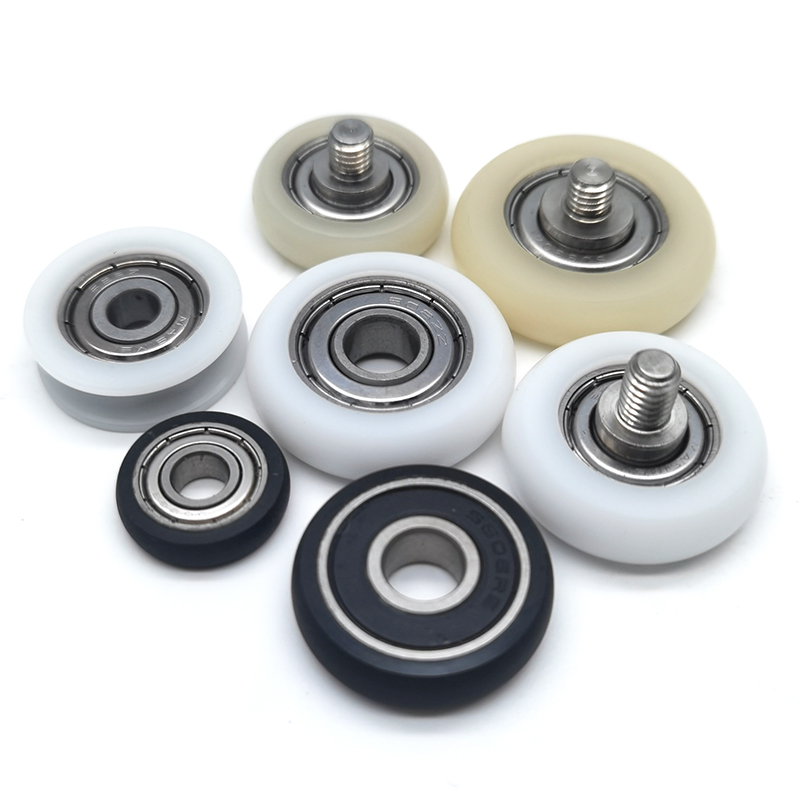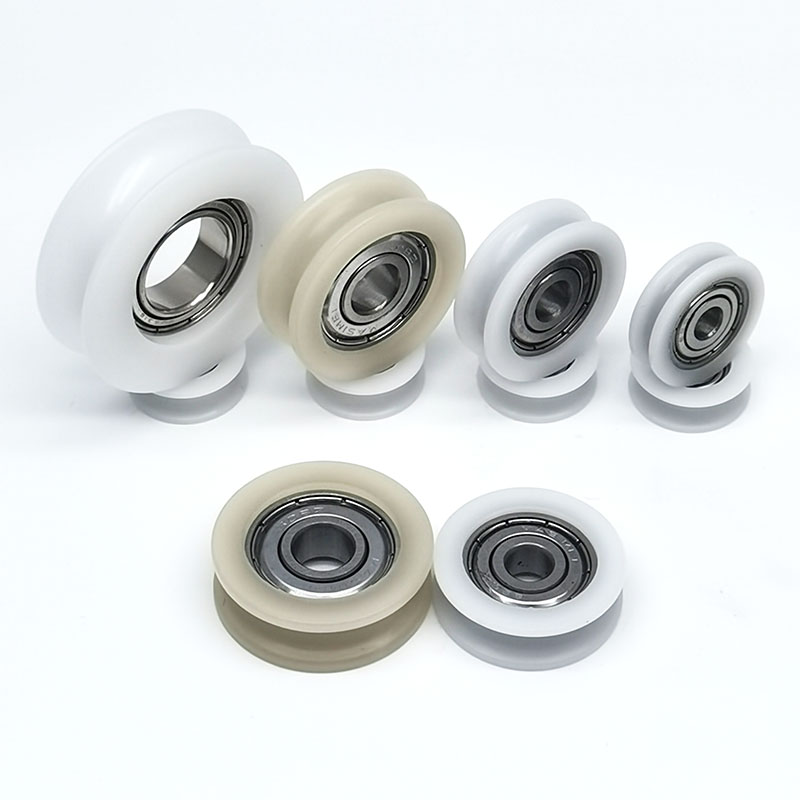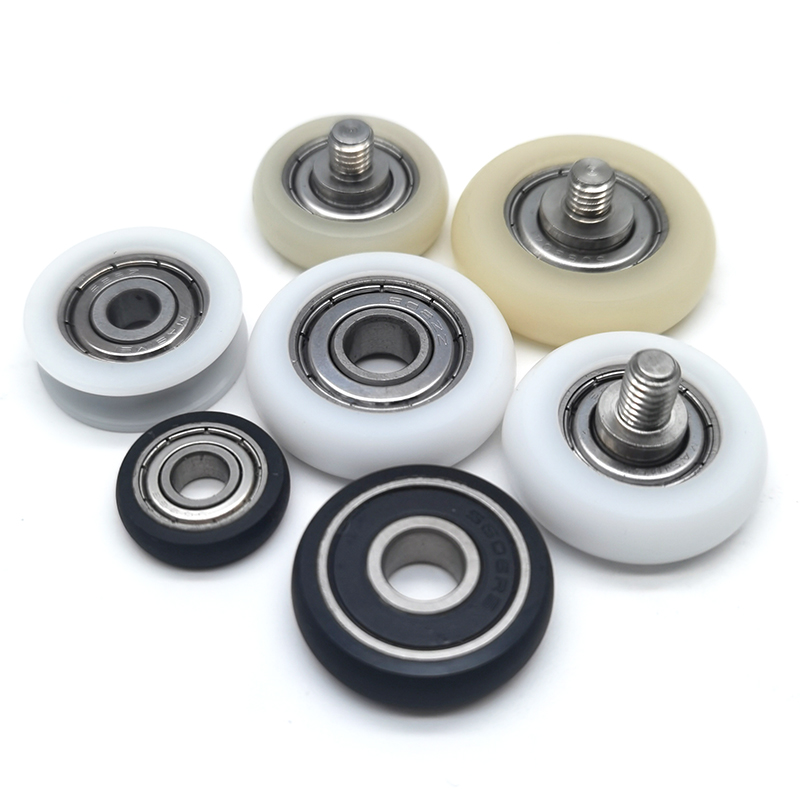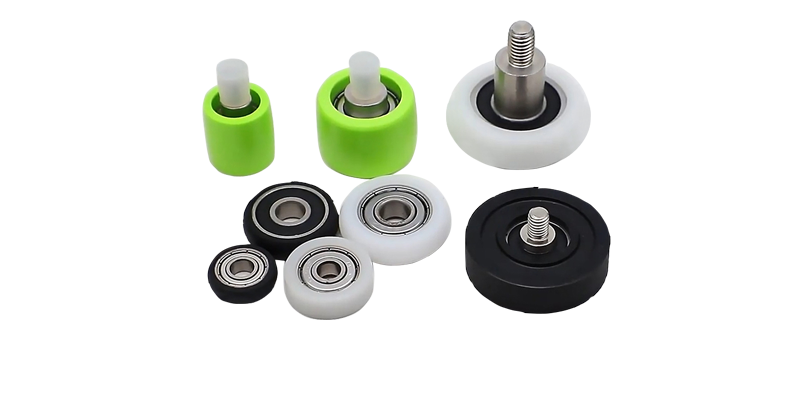86-15820855246(WhatsApp)
info@semeimachinery.com
 SEMEI Wheel Bearings : What are the types of sliding door wheels?
SEMEI Wheel Bearings : What are the types of sliding door wheels?Sliding door rollers are essential components in sliding door systems, designed to reduce friction and ensure smooth movement of the door. There are several types of sliding door rollers, each with specific applications and advantages. Here are the common types:


Application: Suitable for doors that are suspended from the top track, such as closet doors and room dividers.
Design: The wheels are installed at the top of the door and roll along the top track.
Advantages:
Aesthetic Appeal: The top-hung design provides a cleaner and more attractive appearance.
Stability: Generally more stable and capable of supporting heavier weights.
Common Sizes: 1 inch, 1.5 inches, 2 inches, 3 inches, etc.
Application: Suitable for doors that slide along a bottom track, such as patio doors and balcony doors.
Design: The wheels are installed at the bottom of the door and roll along the bottom track.
Advantages:
High Load Capacity: Bottom-rolling designs typically support heavier weights.
Ease of Installation: Bottom-rolling designs are generally easier to install.
Common Sizes: 1 inch, 1.5 inches, 2 inches, 3 inches, etc.
Application: Suitable for doors that slide along a side track, such as folding doors and sliding windows.
Design: The wheels are installed on the sides of the door and roll along the side track.
Advantages:
Flexibility: Side-hung designs allow for more flexible opening and closing movements.
Space Efficiency: Side-hung designs take up less space.
Common Sizes: Vary depending on the specific application.
Soft Wheels:
Noise Reduction: Soft wheels produce less noise when sliding, making them suitable for environments requiring quiet operation.
Floor Protection: Soft wheels cause less wear and tear on floors.
Material: Typically made of rubber or nylon.
Advantages:
Hard Wheels:
Durability: Hard wheels are more durable and suitable for high-load and frequent-use applications.
Maintenance: Hard wheels are less prone to deformation and require less maintenance.
Material: Typically made of metal or plastic.
Advantages:
Material: Stainless steel.
Advantages:
Corrosion Resistance: Stainless steel rollers are highly resistant to corrosion, making them ideal for outdoor or humid environments.
High Strength: Stainless steel rollers are strong and can support heavy weights.
Long Lifespan: Stainless steel rollers have a long lifespan and low maintenance costs.
Design: Contain built-in lubricants, eliminating the need for frequent oiling.
Advantages:
Ease of Maintenance: Self-lubricating rollers reduce the frequency of maintenance.
Consistent Performance: Self-lubricating rollers maintain good performance over extended periods.
Design: The height or position of the wheels can be adjusted to fine-tune the alignment of the door.
Advantages:
Convenient Installation: Adjustable designs make installation and adjustment more convenient.
Versatility: Suitable for tracks of different heights and positions.
Door Weight: Ensure the rollers have the capacity to support the weight of the door.
Track Type: Choose rollers that are compatible with the type and shape of the track.
Mounting Method: Ensure the rollers have a mounting method that is compatible with your existing door frame.
Material: Select the appropriate material based on the environment, such as stainless steel for outdoor use.
Lubrication Needs: Consider whether self-lubricating rollers are necessary to reduce maintenance frequency.
By considering these factors, you can choose the most suitable sliding door rollers to ensure smooth and reliable operation of your sliding doors.
